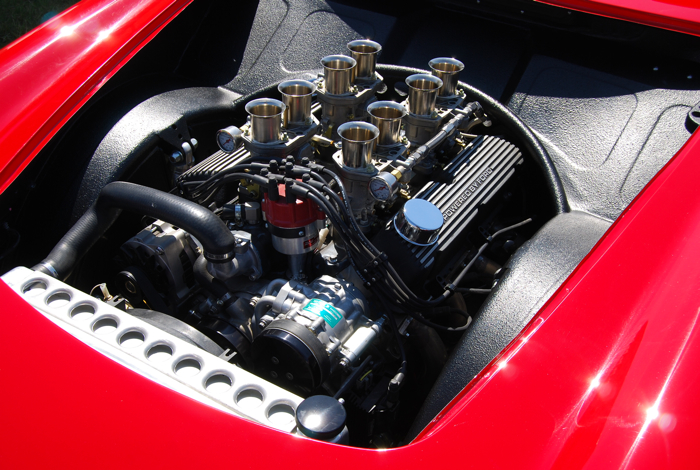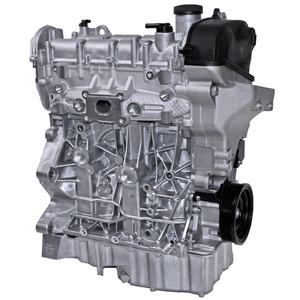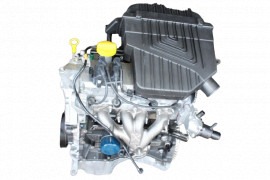Opel Corsa Engine: Common Issues and How to Deal with Them
Wiki Article
Exploring the Inner Workings of a Compact Automobile's Engine System
As motorists, we frequently take for approved the detailed processes that take place within the confines of our automobile's engine system. The small yet complicated equipment that thrusts us forward is a marvel of engineering precision and sychronisation. From the regulated surges in the combustion chamber to the thorough timing of gas injection, every element plays a vital role in the smooth procedure of the engine. In this exploration of a small vehicle's engine system, we will certainly decipher the internal operations of this mechanical symphony, clarifying the enigmas that drive us onward on our daily trips.Burning Process Review
The combustion process in a portable automobile's engine system is a vital device that efficiently transforms fuel right into power to power the vehicle. This procedure takes place within the combustion chamber of the engine, where gas and air mix, stir up, and produce regulated explosions. The combustion process contains four major phases: intake, power, exhaust, and compression.Throughout the intake phase, the piston moves downward, attracting a mixture of air and fuel into the combustion chamber. The next stage, compression, entails the piston relocating upwards, compressing the air-fuel blend to boost its effectiveness. Subsequently, in the power stage, the trigger plug sparks the pressed combination, resulting in a fast development of gases that forces the piston pull back. This downward activity produces the power needed to drive the automobile. In the exhaust stage, the scorched gases are gotten rid of from the burning chamber through the exhaust valve, preparing the chamber for the next cycle. This cyclic burning procedure is essential to the procedure of a small vehicle's engine system, guaranteeing reliable energy conversion for propulsion.
Piston and Cyndrical Tube Interaction

The piston's accurate fit within the cylinder is necessary for keeping optimal compression and stopping energy loss during burning. Limited clearances in between the piston and cylinder walls make sure effective sealing, permitting the piston to move smoothly without enabling gases to leakage past. Correct lubrication is additionally vital to lower rubbing and use in between these parts, enhancing longevity and performance.
In addition, the design and products utilized in manufacturing the piston and cylinder effect engine performance and toughness. Modern engines commonly employ lightweight yet long lasting products like aluminum alloys for pistons and cylinder liners to decrease inertia and improve thermal efficiency. Overall, the harmonious communication in between the piston and cylinder is fundamental to the engine's capability and total efficiency.
Fuel Shot System Performance
Fuel shot systems in small vehicle engines play a critical original site duty in exactly providing gas to the burning chamber for effective and controlled ignition. The gas shot system works by infusing fuel right into the combustion chamber at the optimum moment throughout the engine's operation (opel corsa engine). This accurate timing makes certain that the fuel blends evenly with the air for correct combustion, bring about improved gas efficiency and decreased Your Domain Name exhaustsThere are mostly 2 types of gas injection systems utilized in portable car engines: port gas shot (PFI) and direct gas injection (DFI) PFI systems inject gas right into the intake port prior to the consumption shutoff, while DFI systems inject gas straight into the combustion chamber. Both systems have their benefits, with DFI providing much better gas atomization and PFI offering a more cost-efficient solution.
Comprehending Engine Air Conditioning Mechanisms
Efficient operation of a compact car's engine depends heavily on the efficiency of its cooling systems. The air conditioning system in a compact lorry typically consists of several components functioning with each other to regulate the engine temperature. Recognizing these engine cooling mechanisms is crucial for keeping the efficiency and longevity of a compact automobile's engine system.
Exhaust System Parts Explained
The optimum functioning of a compact automobile's engine air conditioning mechanisms depends on a complementary system recognized as the exhaust system, which makes up numerous necessary components for making certain efficient emissions and engine performance. The exhaust manifold accumulates exhaust gases useful reference from the engine's paths and cylinders them to the catalytic converter.One vital part of the exhaust system is the oxygen sensing unit, which keeps track of the oxygen levels in the exhaust gases to help regulate gas consumption and ensure optimal engine performance. opel corsa engine. Furthermore, the resonator might be existing in some exhaust systems to decrease sound levels. Overall, the exhaust system plays a crucial role in keeping engine efficiency, lowering hazardous discharges, and ensuring a quieter driving experience for small car owners

Final Thought
Finally, the small car's engine system is a complex combination of elements that function together to facilitate the burning process, transform fuel right into energy, and get rid of waste gases. Recognizing the inner functions of the engine system, including the piston and cylinder communication, gas injection system, engine air conditioning devices, and exhaust system parts, is critical for keeping optimum efficiency and performance of the lorry.The burning procedure in a portable automobile's engine system is a crucial device that efficiently transforms fuel right into energy to power the lorry.Fuel injection systems in compact automobile engines play a crucial function in specifically supplying gas to the combustion chamber for regulated and reliable ignition.There are mainly 2 types of gas injection systems used in portable automobile engines: port fuel shot (PFI) and straight fuel shot (DFI) Understanding these engine cooling devices is important for keeping the efficiency and long life of a compact vehicle's engine system.
The optimal functioning of a portable vehicle's engine air conditioning systems depends on a complementary system known as the exhaust system, which consists of different essential elements for making certain efficient emissions and engine efficiency.
Report this wiki page